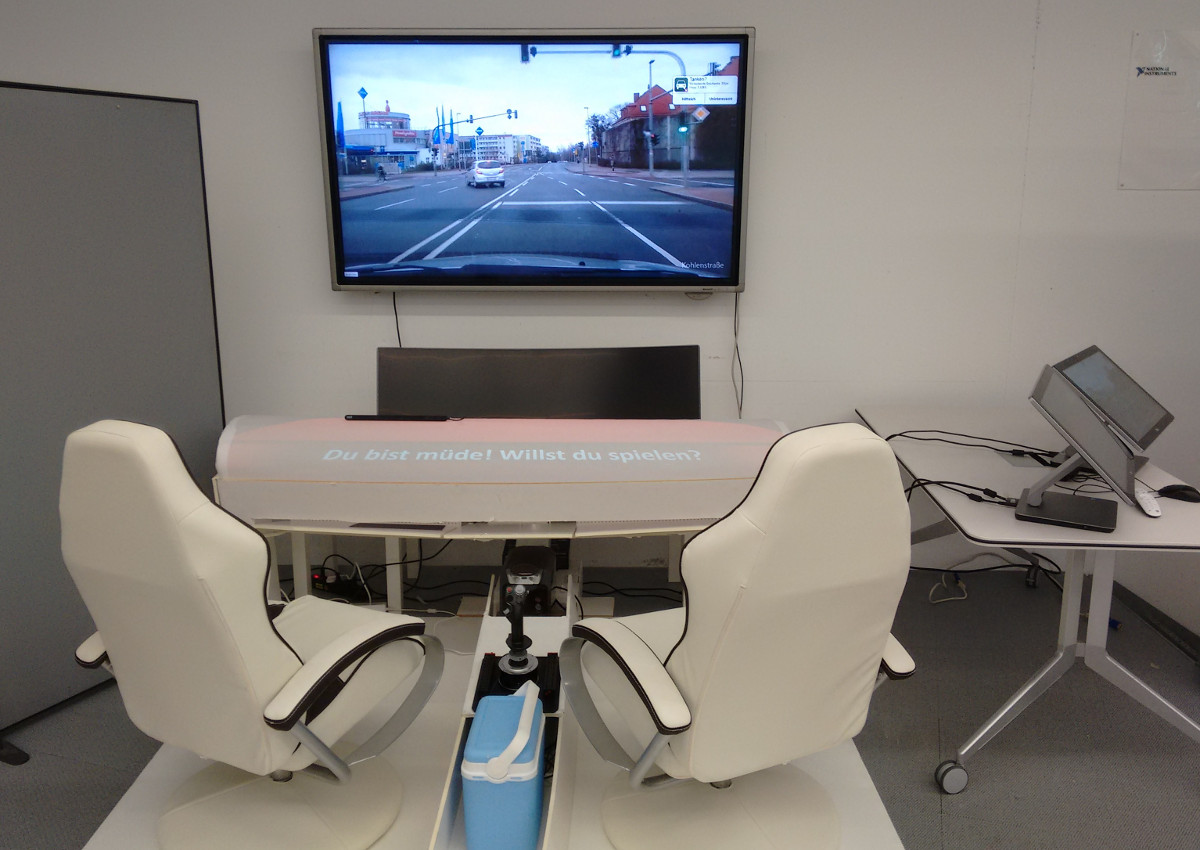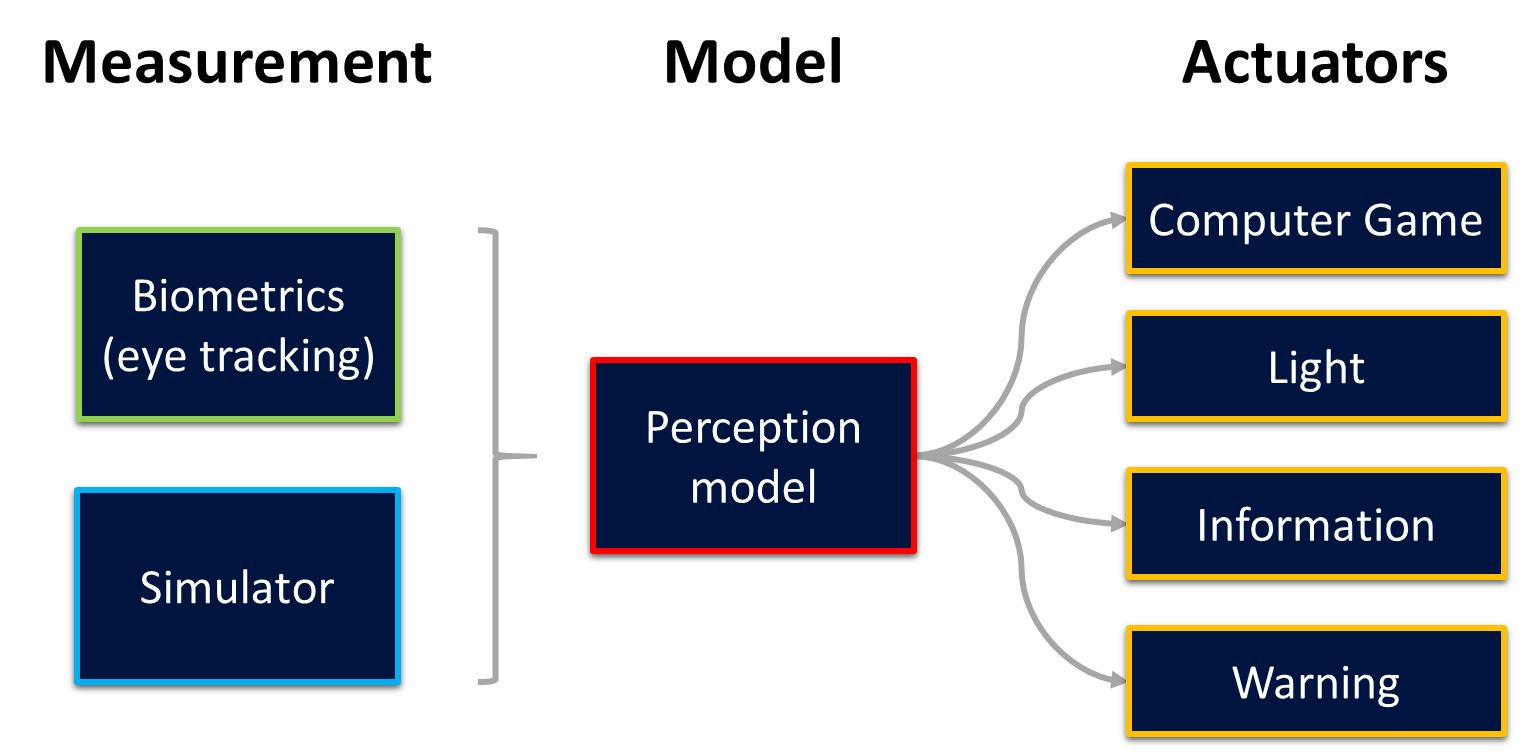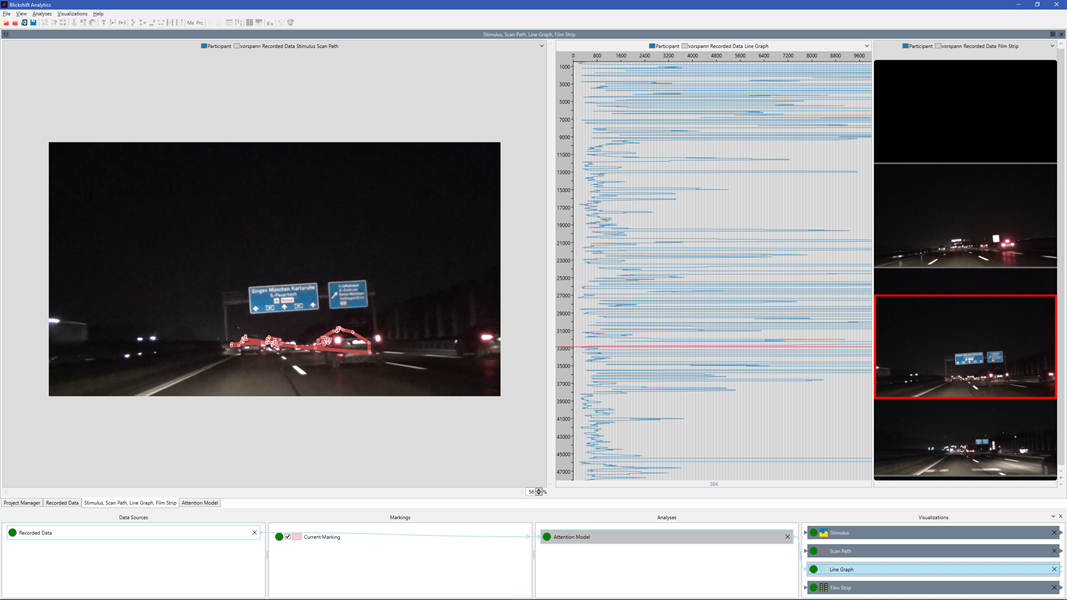Project results: Lean prototyping environment based on Blickshift Analytics
- Development of the lean prototyping environment for a fast and cost-saving development and validation of interaction concepts
- Development and implementation of an attention detection algorithm using Blickshift Analytics
- Design and construction of a mock up
Together with the Open Photonics – BaKaRoS project team at Fraunhofer IAO we have developed a lean prototyping environment to evaluate interaction concepts based on attention measurement. We measured the attention of passengers in a level 3 or 4 car using eye tracking and used a gamification concept to interact with these passengers based on their attention level. One standard application of this setup is to prepare drivers for a safe hand over process in level 3 cars.
In contrast to series cars where attention is measured via more than 100 indicators including the steering wheel angle changes, we only have used an eye tracking sensor in this first version. During only one day, we have constructed the hardware mockup, including two racing car seats, one dashboard with an integrated beamer to present information, a wide screen in front of the dashboard and a large screen showing the traffic situation, see figure 1. The other days of the project have been used to develop the interaction concept and the algorithmic components.
Figure 1: Lean prototyping environment for developing and evaluating interaction concepts based on attention measurement.
During a drive in the simulator of the lean prototyping environment, we constantly record eye movements and compute the attention level using an attention computation algorithm. The result of the attention level computation is sent to a Microcontroller changing the light environment in the simulator. When the attention level falls below a given threshold, a Pong game is started on the wide screen. The passengers play this game using hand controllers. This interaction aims at motivating the passengers to concentrate on the game, resulting in faster eye movements and higher cognitive workload. When the attention computation algorithm detects an attention level higher than the given attention threshold, the game is stopped and the light environment is changed back to the starting condition.
Figure 2: A perception model, developed with Blickshift Analytics, computes the current attention level and sends this information to different actuators for changing light or playing a computer game.
For the development of the attention computation algorithm, we firstly have used the new “Algorithm Development” feature in Blickshift Analytics. This component works as follows. A Visual Studio solution provides all necessary interfaces to get data from and to send data to the Blickshift framework. For the development of our attention computation algorithm we have used a special class dedicated for creating a new data column in the data model of the Blickshift framework. After compiling the Visual Studio solution, a new analysis node is available via the user interface of Blickshift Analytics. Since, like all analysis and visualization nodes, the Algorithm Development node is also integrated seamlessly into the workflow, we easily could parametrize the attention detection and visually validate the results.
Figure 3: New data node „Algorithm Development” in Blickshift Analytics. Both real world situation with eye movements (right column) and results from the attention detection (middle column) are visualized. Via a Visual Studio solution, the detection algorithm is implemented. New results of the detection can directly be validated via the Blickshift visualization interface in an iterative development process.
On 4th July, we have presented the prototype in the headquarter of Fraunhofer in Munich. Together with our project partner, Fraunhofer IAO, we are now working on the next version of this interaction evaluation environment.
The goal is to provide car manufacturers and suppliers a lean prototyping environment, where they can easily develop and validate interaction concepts using a small budget. In addition, Blickshift and Fraunhofer IAO provide innovation workshops for elaborating generating cutting edge interaction concepts for a new mobility experience.
Client
Fraunhofer IAO specializes in supporting the development of mobility products and services – from charging stations and a range of mobility services to entire vehicles. To do this, we provide access to a variety of rapid technologies, such as 3D printing, as well as to a workshop for mechanical and electrical engineering projects.




